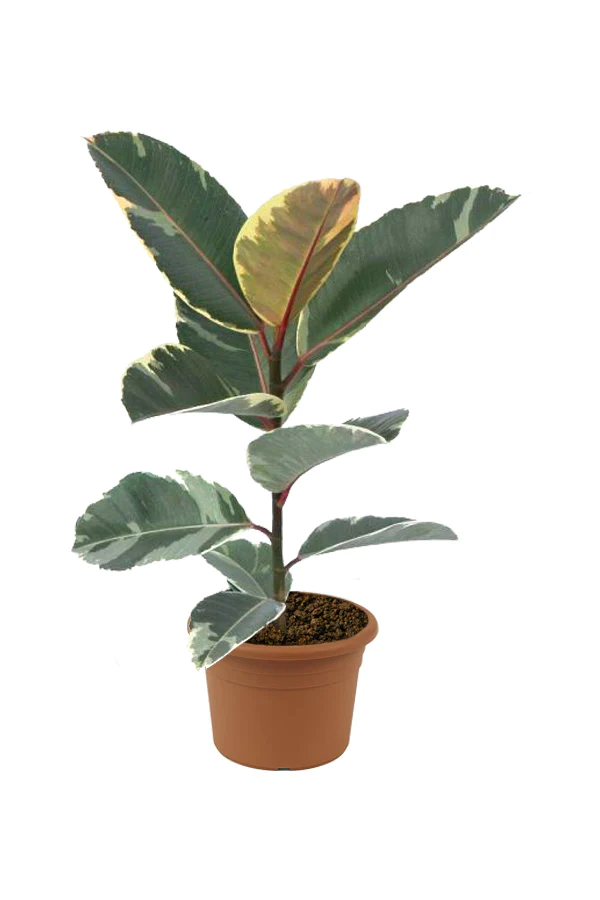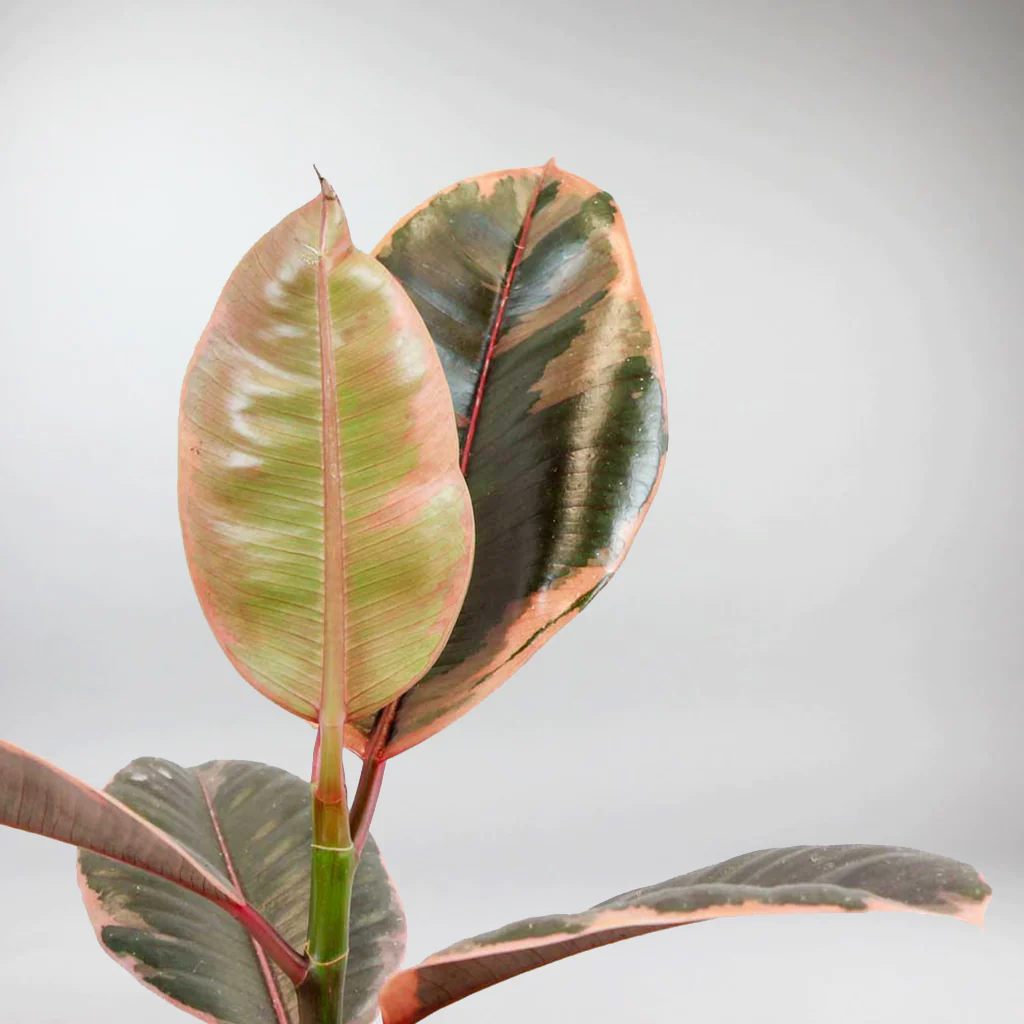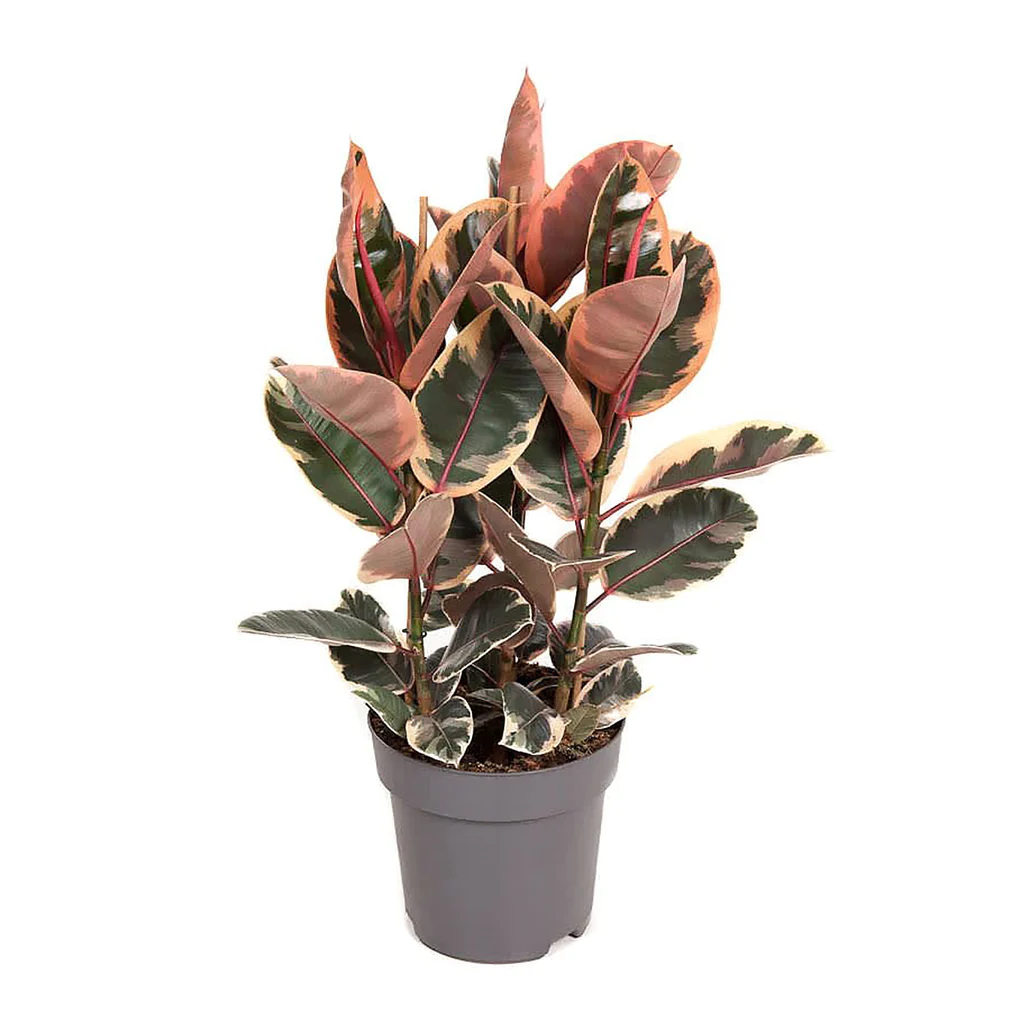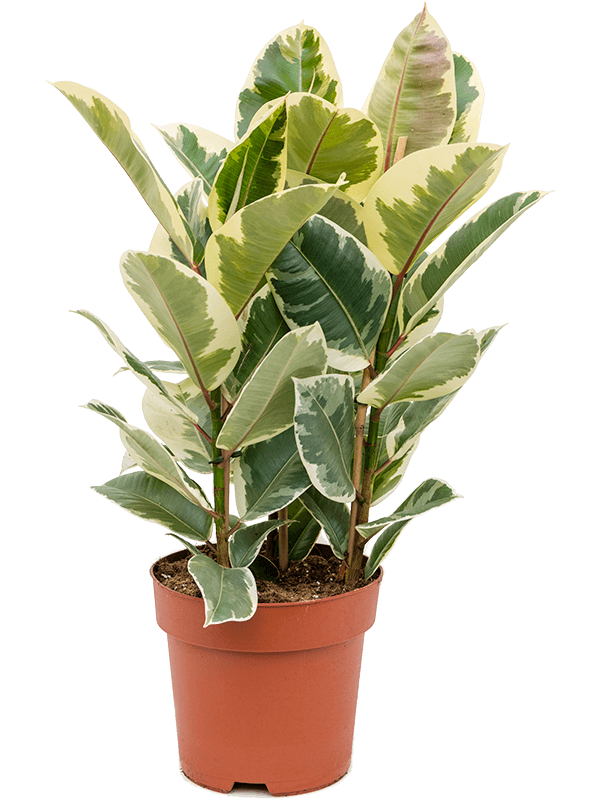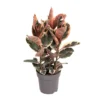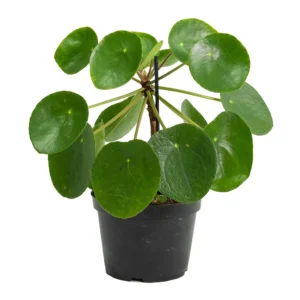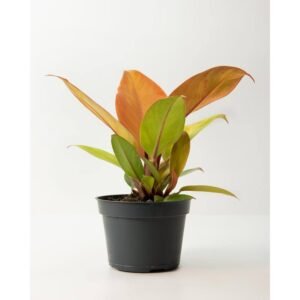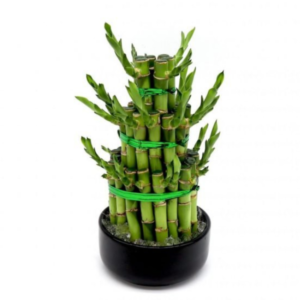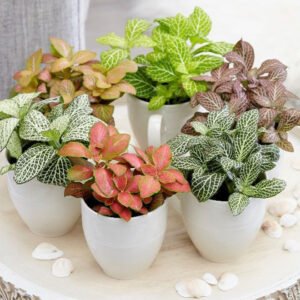| Scientific name | Ficus elastica |
| Common name | Ficus elastica variegated |
| Temperature requirement | 18-24 °C |
| Humidity | 40-50% |
| Light | Bright indirect sunlight. |
| Watering | Water everyday and keep moist |
| Pests | Aphids, mealy bugs, spider mites, scale and thrips |
| Pet friendliness | Toxic to pets and humans |
| Maximum Plant height | Up to 3m |
| Potting mix | Potting soil / Red soil / Manure / Perlite |
| Pot requirement | Good drainage and repot every 1-2 years |
| Nutrition | Apply Manure once in fortnight and NPK in next fortnight |
| Pruning/training | Remove dead and diseased leaves with sterile shears |
| Description | Native to southern china, southeast asia, and indonesia, ficus elastica is a species of evergreen tropical tree that makes for an excellent houseplant.The ficus elastica’s family, moraceae, is a family of shrubs, trees, and lianas; they are known for bleeding a latexy sap upon wounding, and exhibiting “foliar polymorphisms.” This means that their leaf shapes will be different for different stages of life, which is a unique and special feature, as most other plants exhibit the same leaf shapes throughout their lives.The rubber tree needs at least six to eight hours of light daily. This can be lower light at times, but it is best to give this species medium to bright light, preferably bright indirect.If your windows receive harsh direct sun, placing a sheer curtain over it can help diffuse the light. You can tell if the rubber tree is not receiving enough light by the color on its leaves, which will begin fading.It is best to water your rubber tree every 1-2 weeks, allowing the soil to dry out between waterings.If the plant’s leaves begin curling inward or the potting mix is dry, this is a sign you need to water it more often. Conversely, if the leaves begin dropping or the potting mix is wet, you should decrease the frequency of your watering schedule.Indoor conditions it will be reaching 6 to 10 ft. Or 2 to 3 meters, if provided the proper conditions. |

